Historical Solo Sojourn: Roaming the Ruins of Hampi and Beyond
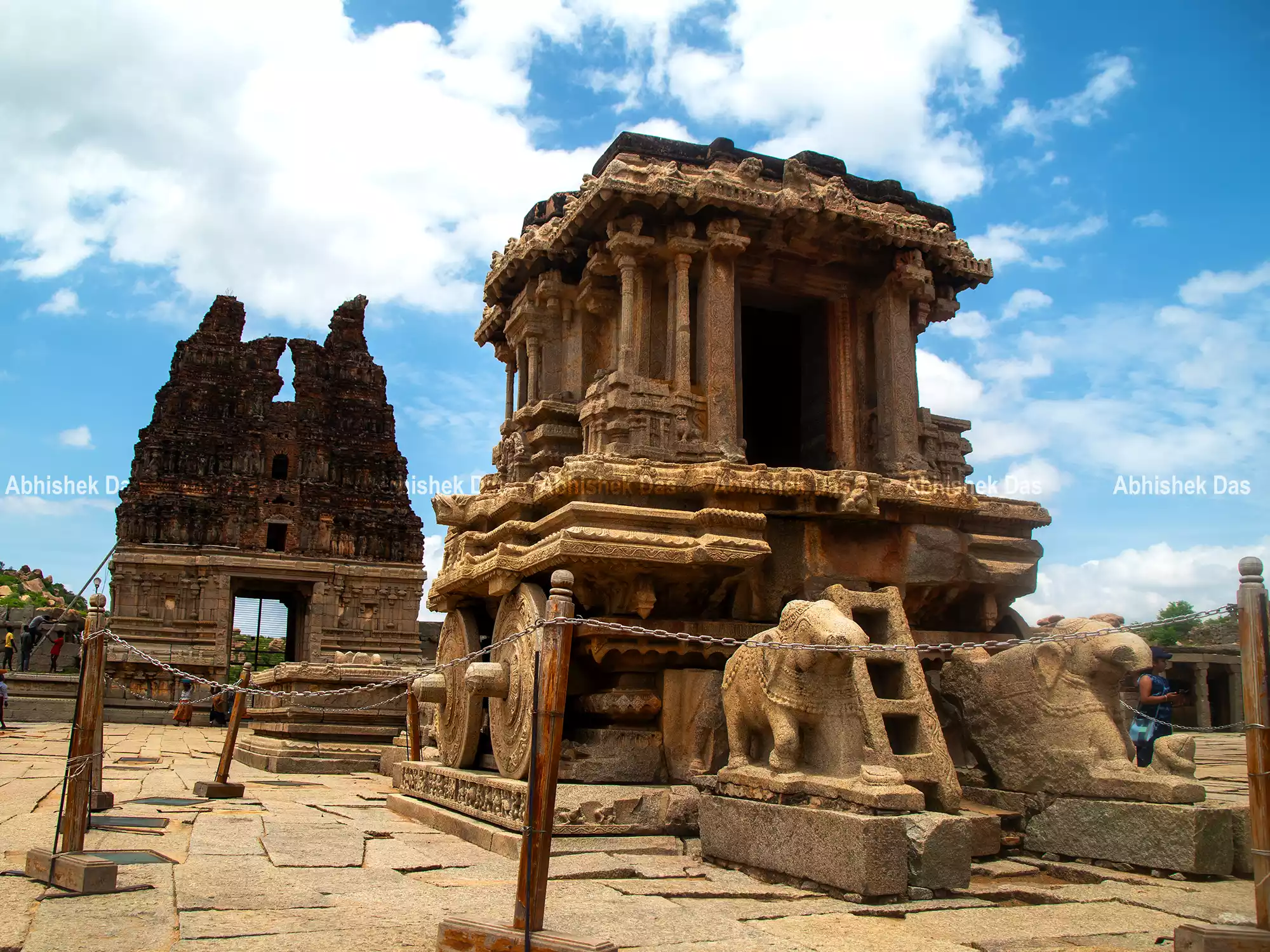
Do historical sites excite you? Do ancient architectural marvels leave you spellbound? Then you could not have missed coming across the name of Hampi.
The mighty Vijayanagar Empire had Hampi as its capital, and Hampi’s ruins still showcase the empire’s architectural brilliance. Hampi is known for its numerous palaces, structures, and temples like Virupaksha Temple, Vitalla Temple, and Hazara Temple are famous for their intricate carvings and impressive design.
A weekend solo trip to Hampi can be an opportunity to explore oneself while exploring the place’s rich history. Most of the time traveling solo leads to a rich and authentic cultural experience of the travel destination. Being in an unfamiliar place with non-familiar people encourages self-reflection and introspection. Apart from the ease of planning, a successful solo travel experience leaves a sense of empowerment.
Join us in this article as we take a deep dive into the historical importance of Hampi, its impressive architectural and engineering knowledge and its beautiful landscape. Walk through the beautiful location in the surrounding region of Hampi. Also, covered in this article is solo travel and its impact on one’s personality and some safety tips for travelling alone in and around Hampi.
Historical Background of Hampi
Introduction to the Vijayanagar Empire
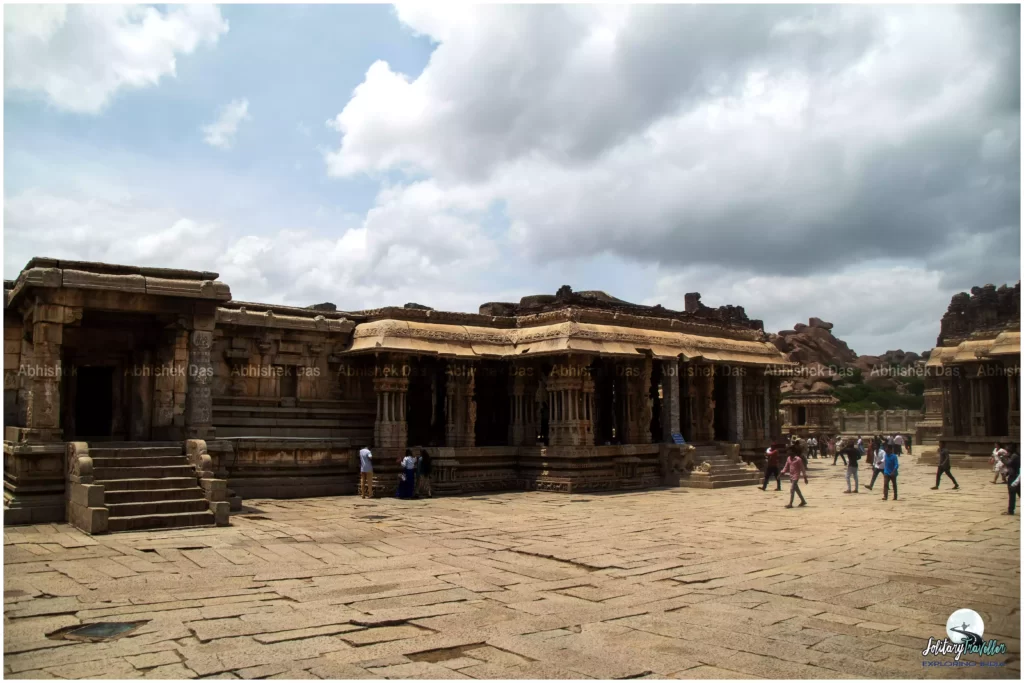
Vijayanagar Empire was the most prosperous empire from the 14th to 17th centuries. The empire established its capital at Hampi (present-day Karnataka), on the banks of river Tungabhadra. At some point in its glorious history, the Vijayanagar Empire was widespread throughout major parts of South India including present-day Karnataka, Andhra Pradesh, Telangana, and Tamil Nadu. It also made its influence in regions of present-day Kerela, Maharashtra, and Orrisa.
Major historical landmarks of Hampi
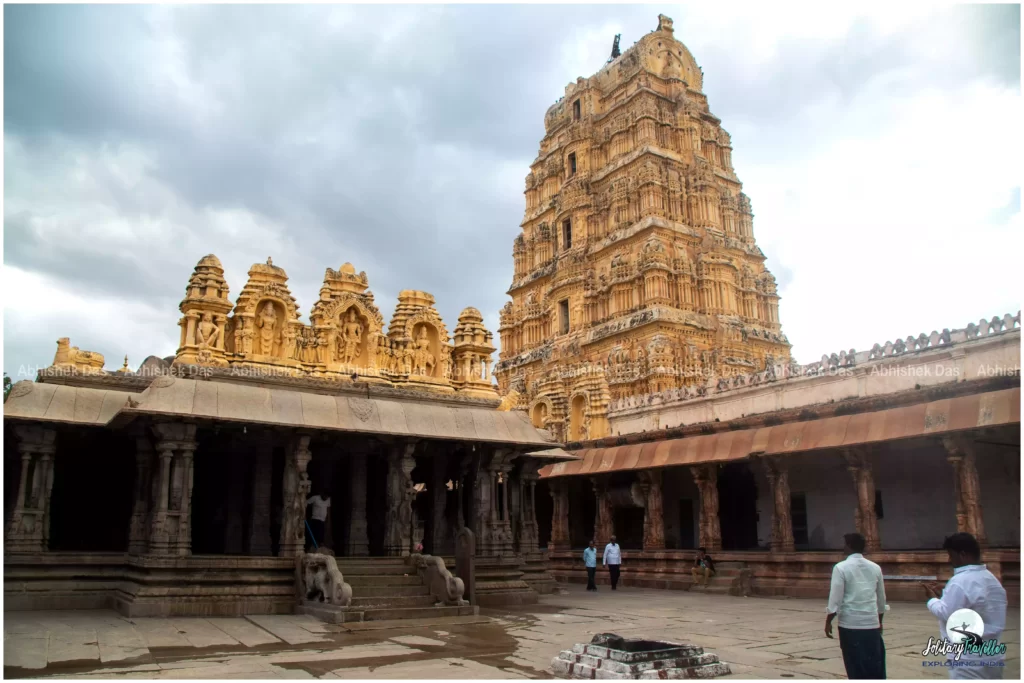
Hampi has been rendered the status of a UNESCO World Heritage Site owing to its stunning ruins, intricate architecture, and rich history. One of the oldest structures in Hampi is the Virupaksha temple, dedicated to Lord Shiva. Vijayanagar Empire’s impressive architectural achievements can be seen in the stone chariot and musical pillars of the Vithalla temple. Built by King Acyuta Deva Raya, the Acyutaraya temple is known for its architecture and carvings. The Hazara Rama temple is known for its elaborate bas-reliefs, depicting scenes from the Ramayana.
Elephant Stables and Lotus Mahal uniquely blend Islamic and Hindu architectural prowess. Elephant stables were once used to house the Royal Elephants of the Vijayanagar Empire whereas Lotus Mahal served as a pleasure place for the Royal Women. The Queen’s bath, used by the Royal Women, not only showed the Empire’s architectural skills but also its advanced engineering skills. The bustling commercial life of the empire is reflected through the row of pavilions at Hampi Bazaar.
You may also like: Travelling Solo to Karnataka: Best Places to Visit
The significance of Hampi’s ruins in Indian history and culture
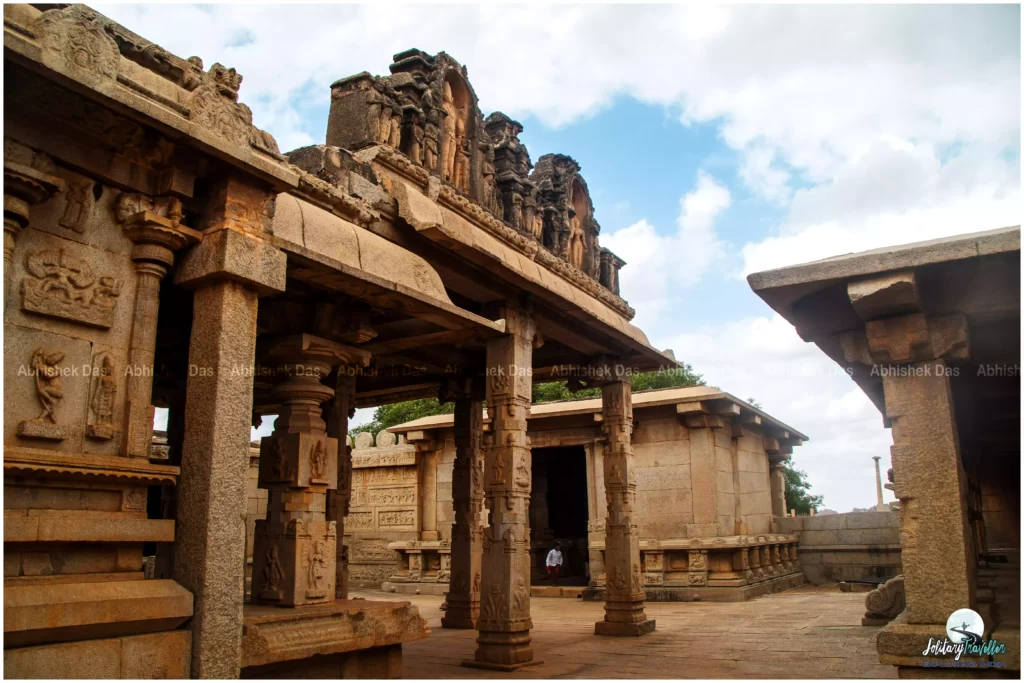
Indian History owes a lot to the ruins of Hampi. The Vijayanagar Empire constitutes a major portion of Indian History and Hampi being their capital, helped a lot to understand the brilliance of the empire in many fields like architecture, engineering, and military. The place also gives an insight into the Islamic and Hindu cultural fusion that shaped the Vijayanagar Empire. Hampi’s ruins provide an insight into the political, social, and economic dynamics of medieval South India. Hampi’s findings are mentioned in various historical texts like writings of foreign travellers such as Domingo Paes and Abdur Razzak and offer accounts of life in the great empire.
Exploring Hampi: Solo Adventures Amidst the Ruins
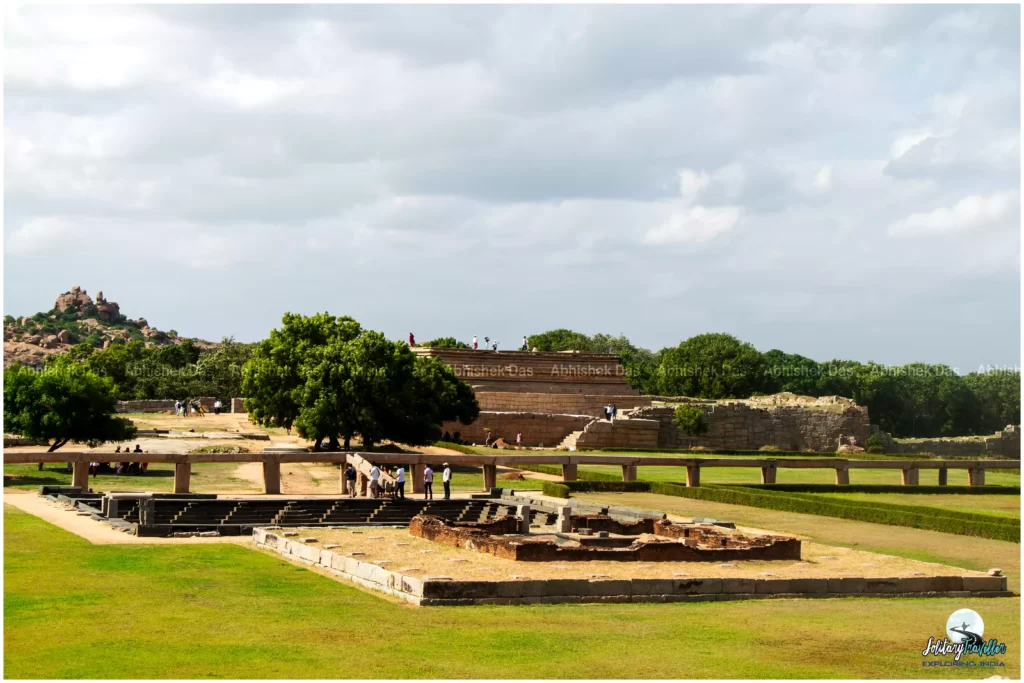
Day-wise itinerary for exploring Hampi’s Major Attraction
Day -1
The first day should be spent exploring the sacred centre and royal enclosure. The day can start by exploring the Virupaksha temple and witnessing the morning rituals, followed by a stroll through Hampi Bazaar and getting hold of some souvenirs and local crafts.
Later in the day, a climb up Hemakuta Hills will give a panoramic view of the surrounding landscape, and also a visit can be made to the ancient temples and ruins atop the hills. A visit to the Krishna Temple complex will be impressive as it has carvings and sculptures depicting Hindu culture.
The day can end by witnessing the breathtaking sunset at the Matanga Hills.
Day-2
The day should start amongst the musical pillars and stone chariots at Vithalla Temple Complex. Nearby attractions like King’s Balance and Underground Temple should also be explored.
The afternoon can be spent at Anegundi Village, believed to be the former Kishkinda. The village has ancient temples caves and Anjaneya Hill, where Hanuman was said to be born.
The day can end with a scenic coracle ride on the Tungabhadra River.
You may also like: Exploring The Temple City- Madurai
Solo travel experiences and tips for navigating Hampi’s ruins
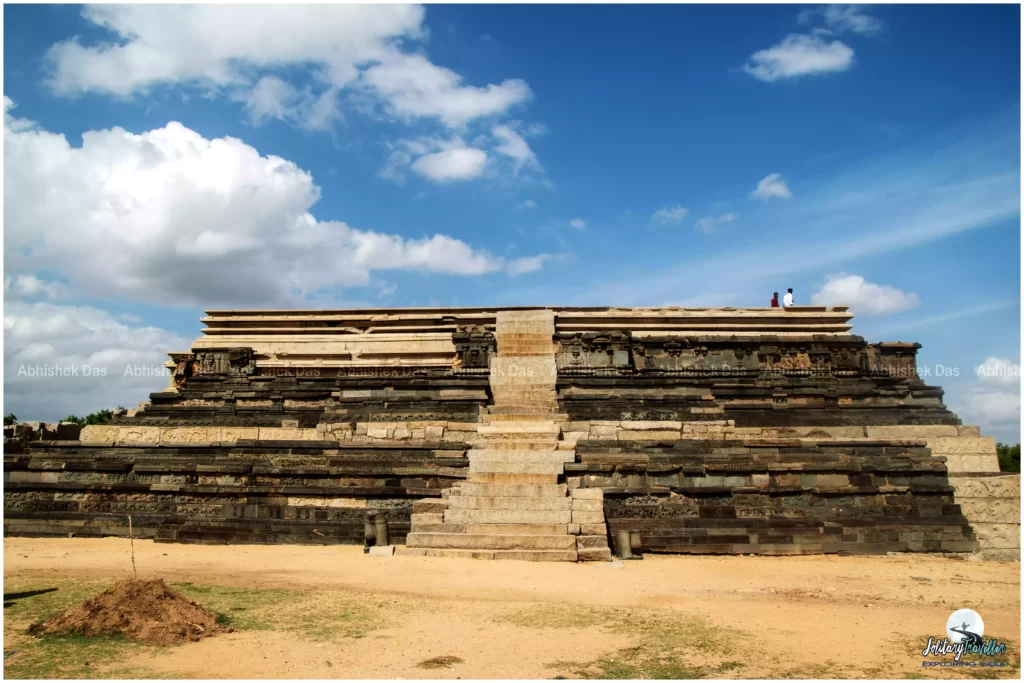
Hampi can be experienced better with a brief understanding of the history of the place and thus, reading a little about the same would help a lot. The area can get very hot during the day and therefore, early mornings and late afternoons are the best time to explore the place. Hampi’s terrain is uneven and rocky and uncomfortable footwear can make the journey difficult. To experience Hampi in its entirety, venturing off the main tourist trail can lead to some unexplored gems. While traveling it is advised to take care of the pious nature of temples and other norms of the local culture.
Comments
Post a Comment